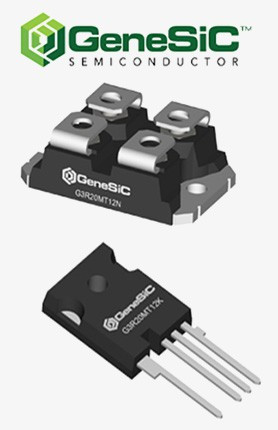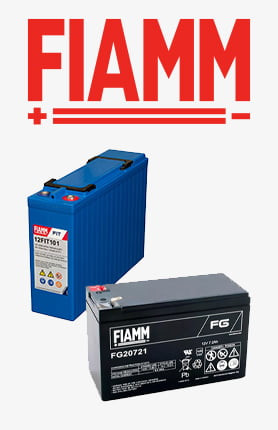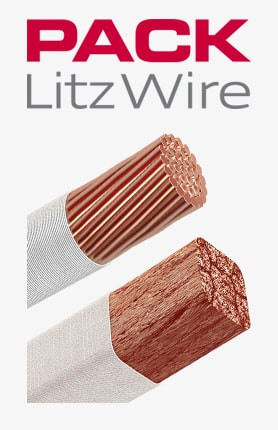trebuie să fii logat
-
întoarce-teX
-
Componente
-
-
Category
-
Semiconductoare
- Diode
- tiristoare
- Module izolate electric
- Redresoare în punte
-
Tranzistoare
- tranzistoare GeneSiC
- Module MOSFET Mitsubishi SiC
- Module MOSFET STARPOWER SiC
- Module MOSFET ABB SiC
- Module IGBT de la MITSUBISHI
- Module de tranzistori MITSUBISHI
- module MITSUBISHI MOSFET
- Module de tranzistori ABB
- Module IGBT de la POWEREX
- Module IGBT - de la INFINEON (EUPEC)
- Elemente semiconductoare din carbură de siliciu
- Accesați subcategoria
- Șoferii
- Blocuri de putere
- Accesați subcategoria
- Traductoare de curent și tensiune LEM
-
Componente pasive (condensatori, rezistențe, siguranțe, filtre)
- Rezistoare
-
Siguranțe
- Siguranțe miniaturale pentru sisteme electronice din seria ABC și AGC
- Siguranțe tubulare cu acțiune rapidă
- Inserții întârziate cu caracteristici GL/GG și AM
- Legături sigure ultra-rapide
- Siguranțe standard britanice și americane cu acțiune rapidă
- Siguranțe cu acțiune rapidă standard european
- Siguranțe de tracțiune
- Siguranțe de înaltă tensiune
- Accesați subcategoria
-
Condensatoare
- Condensatoare pentru motoare
- Condensatoare electrolitice
- Condensatori Icel Film
- Condensatoare de putere
- Condensatoare pentru circuite DC
- Condensatoare de compensare a puterii
- Condensatoare de înaltă tensiune
- Condensatoare pentru încălzire prin inducție
- Condensatoare de impulsuri
- Condensatoare DC LINK
- Condensatoare pentru circuite AC/DC
- Accesați subcategoria
- Filtre anti-interferențe
- Supercondensatoare
- Protecție la supratensiune
- Filtre de emisii revelatoare TEMPEST
-
Descărcător de supratensiune
- Descărcătoare de supratensiune pentru rețeaua de curent alternativ
- Descărcătoare de supratensiune pentru rețea de curent continuu
- Limitatoare de joasă tensiune ALVL
- Limitatoare de joasă tensiune PG
- Descărcătoare de trăsnet pentru rețele de curent alternativ până la 1000V
- Dispozitive de măsurare
- Accesați subcategoria
- Accesați subcategoria
-
Relee și Contactoare
- Teoria releelor și contactoarelor
- Relee cu stare solidă trifazată CA
- Relee cu stare solidă DC
- Regulatoare, sisteme de control și accesorii
- Porniri ușoare și contactoare inversoare
- Relee electromecanice
- Contactoare
- Comutatoare rotative
-
Relee cu stare solidă CA monofazate
- Relee cu stare solidă CA monofazate Seria 1 | D2425 | D2450
- Relee semifazate CA monofazate, seria CWA și CWD
- Relee semifazate CA monofazate seriile CMRA și CMRD
- Relee cu stare solidă CA monofazate Seria PS
- Relee cu stare solidă AC seria duble și cvadruple D24 D, TD24 Q, H12D48 D
- Relee monofazate din seria GN
- Relee cu stare solidă CA monofazate Seria CKR
- Relee monofazate pentru șină DIN AC SERIA ERDA și ERAA
- Relee AC monofazate pentru curent de 150A
- Relee duble cu stare solidă integrate cu radiator pe șină DIN
- Accesați subcategoria
- Relee cu stare solidă imprimabile monofazate CA
- Relee de interfață
- Accesați subcategoria
- Miezuri și alte componente inductive
- Radiatoare, Varistoare, Protectie termica
- Fani
- Aer conditionat, Accesorii tablou, Racitoare
-
Baterii, încărcătoare, surse de alimentare tampon și convertoare
- Baterii, încărcătoare - descriere teoretică
- Baterii litiu-ion. Baterii personalizate. Sistem de management al bateriei (BMS)
- baterii
- Incarcatoare de baterii si accesorii
- UPS și surse de alimentare tampon
- Convertoare si accesorii pentru fotovoltaice
- Stocarea energiei
- Pile de combustibil cu hidrogen
- Celule litiu-ion
- Accesați subcategoria
-
Automatizare
- Elevatoare Spiralift
- Piese pentru drone Futaba
- Întrerupătoare de limită, Micro întrerupătoare
- Senzori, traductoare
- Pirometre
- Contoare, relee de timp, contoare de panou
- Echipament industrial de protectie
- Semnale luminoase și sonore
- Cameră termică
- Afișaje LED
- Butoane și întrerupătoare
- Accesați subcategoria
-
Cabluri, fire Litz, Conduite, Conexiuni flexibile
- Firele
- Presetupe și manșoane
- Chipurile
-
Cabluri pentru aplicatii speciale
- Cabluri de prelungire și compensare
- Cabluri de termocuplu
- Cabluri de conectare pentru senzori PT
- Cabluri cu mai multe fire de temperatură. -60°C până la +1400°C
- Cabluri de medie tensiune SILICOUL
- Cabluri de aprindere
- Cabluri de incalzire
- Cabluri cu un singur conductor temp. -60°C până la +450°C
- Fire de cale ferată
- Cabluri de încălzire în ex
- Cabluri pentru industria de apărare
- Accesați subcategoria
- tricouri
-
Impletituri
- Impletituri plate
- Impletituri rotunde
- Impletituri foarte flexibile - plate
- Impletituri foarte flexibile - rotunde
- Impletituri cilindrice de cupru
- Impletituri si capace cilindrice din cupru
- Curele flexibile de împământare
- Impletituri cilindrice din otel zincat si inoxidabil
- Impletituri de cupru izolate PVC - temperatura de pana la 85 de grade C
- Impletituri plate din aluminiu
- Kit de conectare - impletituri si tuburi
- Accesați subcategoria
- Echipament de tracțiune
- Capse de cablu
- Sine flexibile izolate
- Sine flexibile multistrat
- Sisteme de management al cablurilor
- Accesați subcategoria
- Vezi toate categoriile
-
Semiconductoare
-
-
- Furnizori
-
Aplicații
- Automatizare HVAC
- Automatizare industrială
- Băncile de energie
- Cercetare si masuratori de laborator
- Componente pentru zonele cu pericol de explozie (EX)
- Echipament industrial de protectie
- Echipamente pentru dulapuri de distributie si control
- Exploatare minieră, metalurgie și turnătorie
- Imprimare
- Încălzire prin inducție
- Inginerie energetică
- Mașini CNC
- Masini de sudura si sudori
- Mașini de uscare și prelucrare a lemnului
- Masini pentru termoformarea materialelor plastice
- Măsurarea și reglarea temperaturii
- Motoare si transformatoare
- Surse de alimentare (UPS) și sisteme redresoare
- Tracțiune cu tramvai și feroviar
- Unități DC și AC (invertoare)
-
Instalare
-
-
Inductori
-
-
Dispozitive de inducție
-
-
Serviciu
-
- Kontakt
- Zobacz wszystkie kategorie
Devices Intended for Explosion Hazard Zones

Electrical Devices Designed for Use in Explosive Atmospheres
Electrical devices designed for use in explosive atmospheres are products that incorporate construction solutions to eliminate or mitigate the possibility of igniting explosive mixtures outside these devices, both during normal operation and in fault conditions.
Electrical devices designed for use in explosive atmospheres are constructed, manufactured, tested, and marked according to the requirements of:
- Directive 94/9/EC ATEX of March 23, 1994;
- Regulation of the Minister of Economy of December 22, 2005, on essential requirements for devices and protective systems intended for use in explosive atmospheres;
- Multi-part standard EN 60079 regarding various types of construction for explosion-proof devices.
By definition, any electrically powered device—whether it uses AA/AAA batteries, 12/24V power supplies, mains power, or other sources—is capable of generating sparks that could potentially be effective sources of ignition during normal operation. Therefore, to use them in explosive zones, proper protection or construction according to the appropriate technology is necessary.
Explosion-Proof Device Construction
The construction of explosion-proof devices should ensure that the surface temperature of the enclosure and external elements is lower than the temperature of the explosive mixture in the surrounding space. Additionally, measures should be taken to prevent the formation of explosive mixtures inside the device. Explosion protection in electrical devices intended for use in the presence of gas mixtures can be achieved through:
- Protection against sparking
- Energy limitation in the circuit
- Separation of the ignition source from the explosion hazard zone
- Avoidance of flame ignition
- Use of non-flammable materials
- Temperature limitation
If an electrical device or Ex component must withstand particularly adverse working conditions—such as improper handling, moisture effects, temperature fluctuations, chemical influences, or corrosion—it is recommended that the user specifies these conditions to the manufacturer.
Special precautions should be taken if vibrations affect terminals, fuse holders, lamps, and electrical connections, potentially compromising safety, even if they meet the requirements of specific standards.
Electrical devices can only be used in hazardous locations if they meet the requirements of Annex II to Directive 1999/92/EC. In all zones, new devices must be selected based on the categories established in Directive 94/9/EC. According to explosion protection documents, working devices, including warning devices, must be designed, used, and maintained with proper attention to safety principles.
Device Groups for Ex Zones According to ATEX Directive
I – devices intended for use in mining operations where there is a methane or coal dust explosion hazard.
II – devices intended for use in locations with explosive atmospheres other than mining operations.
Device Categories
1 – a device designed to ensure a very high level of protection in atmospheres where explosion hazards are present continuously or frequently over long periods. In explosion hazard zones 0 (gases, vapors, mists) and 20 (dusts)
2 – a device designed to ensure a high level of protection in atmospheres where explosion hazards are present occasionally during normal operation. In explosion hazard zones 1 (gases, vapors, mists) and 21 (dusts)
3 – a device designed to ensure a normal level of protection in atmospheres where explosion hazards are unlikely, and if they occur, they are rare and only for short periods. In explosion hazard zones 2 (gases, vapors, mists) and 22 (dusts).
Work Atmosphere
G – device for use in explosive atmospheres created by flammable gases, vapors, mists
D – device for use in explosive atmospheres created by flammable dusts
The use of explosion-proof devices in explosive atmospheres is essential to the extent that improper construction or incorrect operation is considered one of the potential sources of effective ignition according to the PN-EN 1127-1:2011 standard. Given their widespread occurrence, this is a factor that must be strictly considered.
You should also be aware of the sources of ignition and the regulations for Ex zones. Learn more about them on our blog.
Related posts
 Now available – DC/DC converters from PREMIUM
Now available – DC/DC converters from PREMIUM
 New release in DACPOL lighting for lathes – Kira covers
New release in DACPOL lighting for lathes – Kira covers




Leave a comment